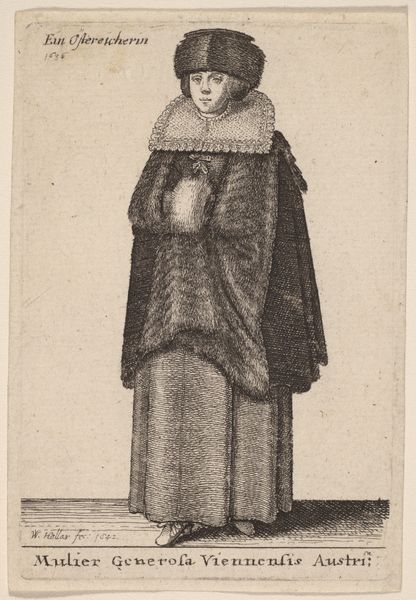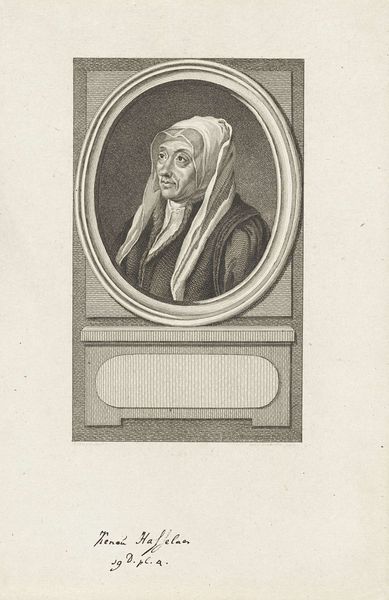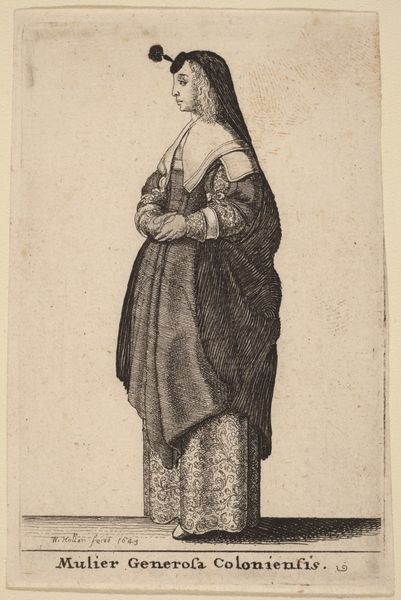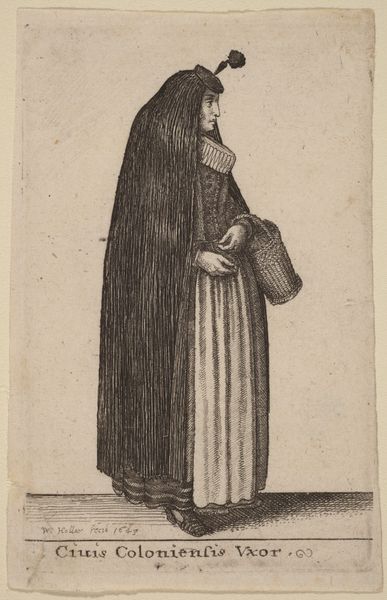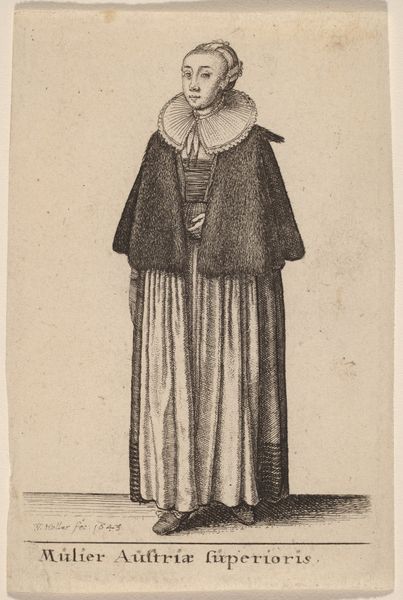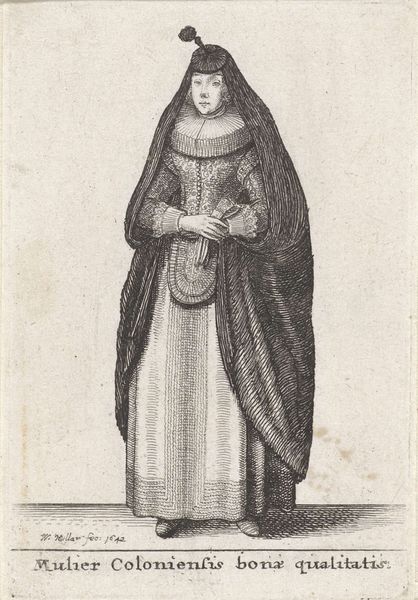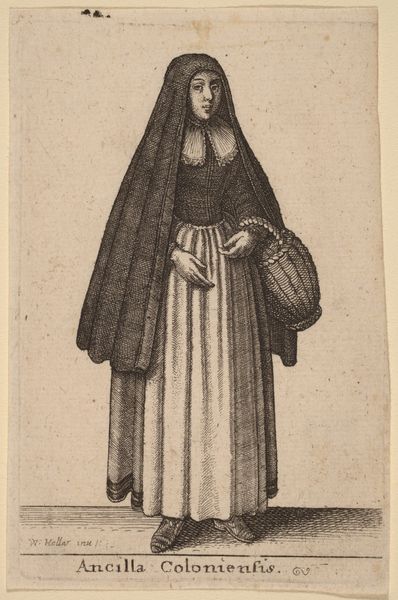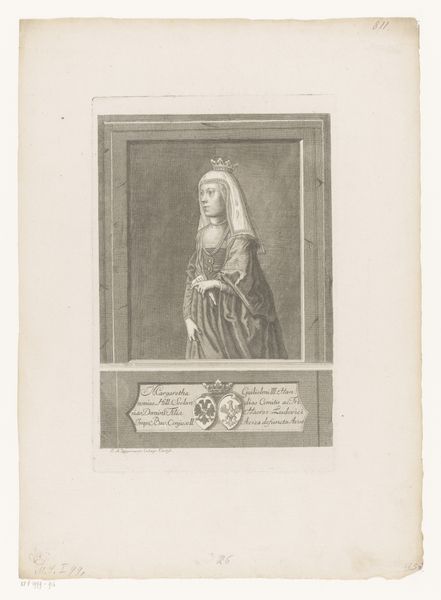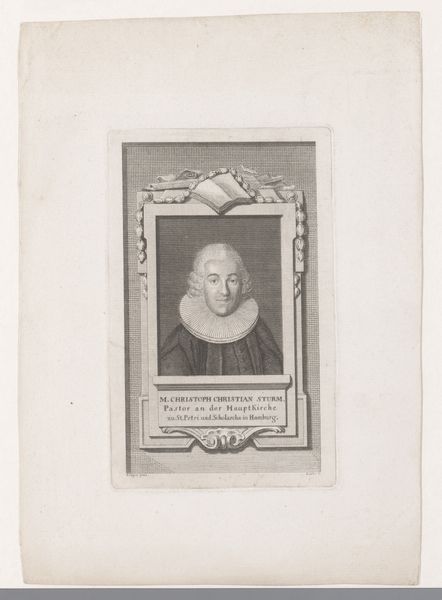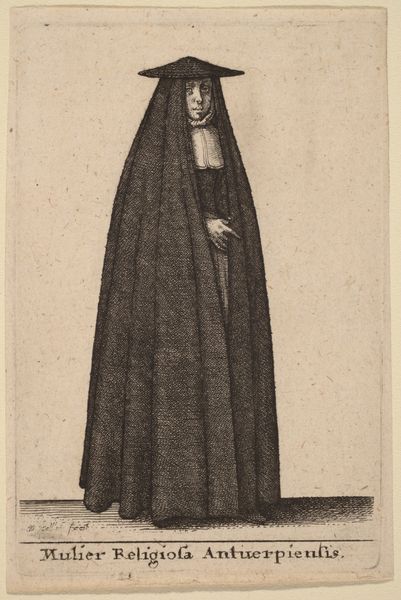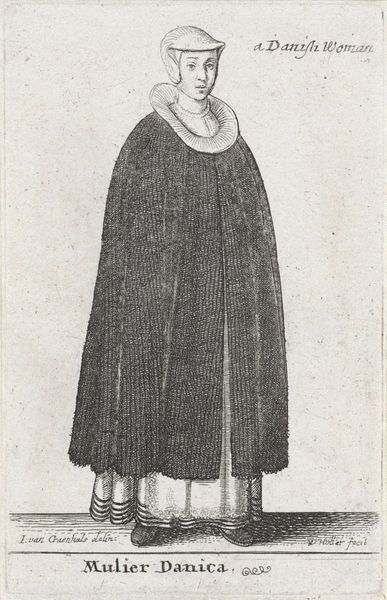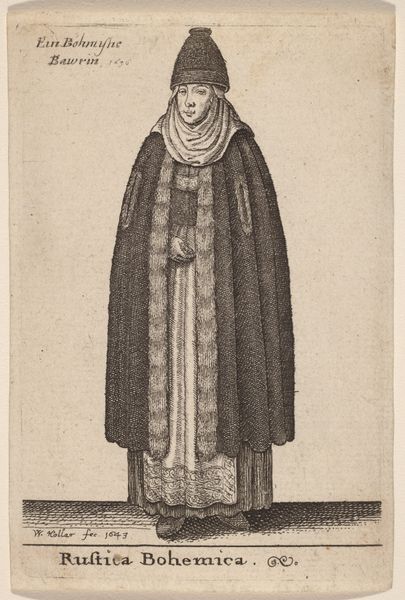
engraving
#
portrait
#
baroque
#
figuration
#
line
#
portrait drawing
#
engraving
Dimensions: height 115 mm, width 88 mm
Copyright: Rijks Museum: Open Domain
Curator: Wenceslaus Hollar created this work, "Portret van een vrouw met houpette", sometime between 1625 and 1727. It's currently held here at the Rijksmuseum. The piece is an engraving, demonstrating Hollar's skill with line work. Editor: It's a striking image, really—almost unsettling. There's something about her hooded appearance and the heavy shadows that give it a somber, almost severe, mood. The texture achieved through engraving really amplifies that, doesn't it? Curator: Absolutely. Think about the labour involved in creating such an intricate image through engraving. The process demands immense control and precision; each line is deliberately etched, signifying both skill and the intensive manufacturing process. Editor: It definitely brings up questions of identity and concealment. Who was this woman? Was her attire a sign of religious affiliation or social status, a personal choice, or something she was compelled to wear? How much autonomy did women of this period have regarding what they wore or how they were portrayed? Curator: Precisely! By using lines of varying thickness and density, Hollar captured subtle modulations of light and shadow on the sitter's face and attire, imbuing the portrait with a striking three-dimensionality. He transformed the printmaking process into artistry. Editor: And you cannot help thinking about this woman's potential agency during this period. The 'houpette,' that little puff of hair on her forehead, what might it represent? Defiance? Fashion? Individuality struggling within the bounds of social norms? The way Hollar captured the draping and weight of her attire speaks volumes, right? Curator: It certainly highlights material conditions of its making as much as representing class. This detailed engraving underscores how art served diverse functions within society. By depicting this woman so precisely through the skillful mastery and transformation of raw materials into cultural product we must remember that art does not exist outside political and historical dimensions. Editor: In engaging with "Portret van een vrouw met houpette", it becomes impossible to avoid the social power dynamics present during that period of history. And the ongoing project of recovering, researching and reframing her story through a more intersectional lens feels critical now. Curator: Reflecting on the artmaking labor required in “Portret van een vrouw met houpette” brings new appreciation for Hollar’s technique. Editor: It reminds me that art invites conversations with, and within, history itself.
Comments
No comments
Be the first to comment and join the conversation on the ultimate creative platform.
